Introduction
Fantasy history is an oxymoron, but that's what is served up by researchers. It is underpinned by the spear-thrower, i.e. 'hunter-gatherer', narrative. This myth states that before 10-12 thousand years ago, mankind made a living throwing spears and gathering nuts. There is no evidence to support this. Evidence does support the assertion that prior to the Pleistocene Catastrophe (PC, The Great Technology Reset) when the Mega-fauna and much of mankind were swept away, the Mediterranean was the center of an Antecedent Levantine civilization (AnL). It used plasma technology to construct remarkable buildings like those at Baalbek and in Sicily's Valley of the Temples. These buildings are declared to be of Greek construction because they 'look' Greek. However, Greeks had nothing to do with them. The Greek 'look' was an AnL look. Greeks lacked the technical capacity to raise these buildings and apply the decorative detail. The absurd spear-thrower myth has precluded consideration of an alternative origin.
In order to explain the origin of classic architecture, academics quote Roman author Vitruvius who in turn resorts to fantasy1. The explanation is a good example of how myths have leaked into science in lieu of empirical evidence. Serious questions, like how mega-ton blocks of stone were raised 50-60 feet, are not asked. Critical thinking has stopped and replaced with repetition of vacuous narratives. The evidence presented below will make it abundantly clear the ancient Greeks were not the originators of classical architecture. They copied parts of AnL designs they could reproduce and let posterity claim they did all of it.
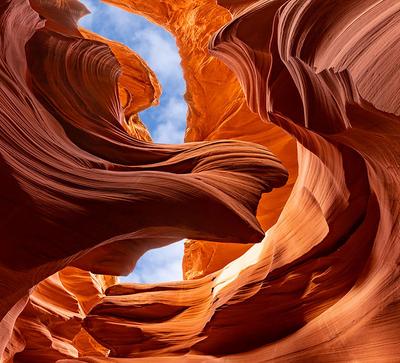
The above image is from Antelope Canyon. The geologic narrative states it was the product of water erosion, but water has almost no effect on rock2. Only plasma could sculpt rock with such precision. Antecedent Egyptians replicated the same precision in creating iconic statues and remarkable vessels that could balance on a single point. Antelope Canyon was formed when a Peratt Event connected to earth's plasma from a Z-pinch Aurora. Sardinians left graphic images of these occurrences. However, it was the AnL who perfected its use to create the classic look in architecture.

The AECs in the image above is a reminder of past Peratt Events on Sicily. They could convert a nearly useless hillside into arable land. Rock originally occupying the AECs was converted back to plasma or soil of varying quality. The reduction of rock by plasma was the property used by the Antecedents to shape rock into their monumental buildings. Only modern man treats plasma as some strange and bizarre form of matter, even though it makes up 99.9% of the universe.
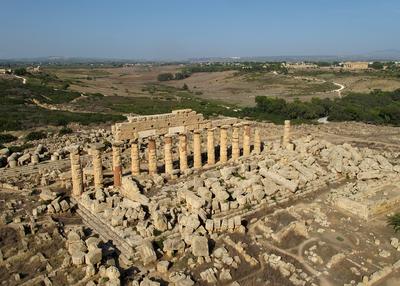
The limited reconstruction above indicates not much was usable other than columns. Upon the Columns rested the pediment, and between the rows of columns was the cella, a structure built of free-stone blocks. Most blocks comprising the cella and pediment disappeared, but column drums survived. It seems plasma needed a solid mass to flow along which cella walls and pediment provided but gaps between columns interrupted, so they survived for the most part. Some columns were composed of sections3, Fig.3L. Greeks could not manufacture, transport and erect large sections. Figures in fig.3R give an idea of their size. Since composition of columns was a mix of sections and drums probably indicates a change occurred in available technical skills during construction. The Parthenon columns are composed of drums about .96m by 1.9m in diameter. That size was probably maximum weight Greeks could lift. Also, rocks in the foreground of 3R are severely eroded, and only plasma could inflict such damage. Just on the basis of column size is proof Greeks did not build this structure.

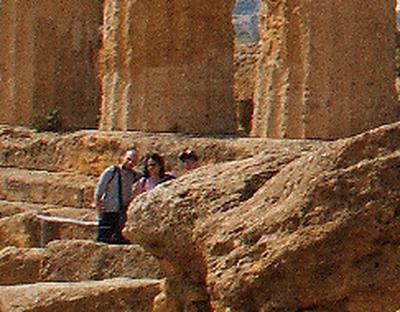
Figure 4: The two figures provide a reference for the size of columns.
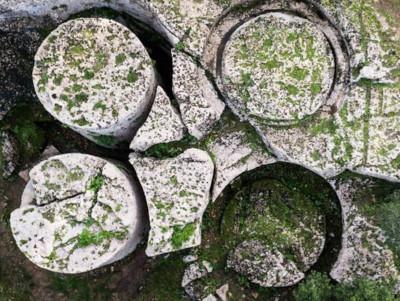
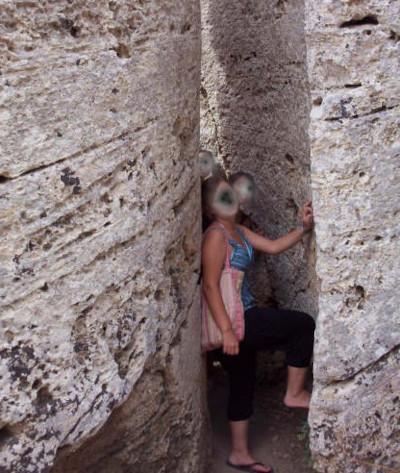

Figure 6: These column drums and sections were massive.
The above images make very clear advance technology was used to quarry and move these column sections. A plasma projector (PP) was used to inscribe the column's diameter, fig.5. The depth of inscribed channel may be only a few inches. To proceed downward, a path had to be cut around the section, so equipment could be brought to bear to extend the inscribed channel. For removal of the finished work, access to the section's back might also have been required since paths did not make complete circumferences. This indicates equipment was light and compact similar to evidence found in Egypt.
To move massive rocks as in fig.6A-B required plasma based technology not know today. Not only were these cylinders moved, they also had to be stacked. Such tasks could not be accomplished by any manual means. The Ionic capital in fig.7A is in very good condition except for some plasma erosion that removed the layer of plasma polish applied by the AnL. It is absolutely ludicrous to assert these column sections were manipulated in any way by manual means.

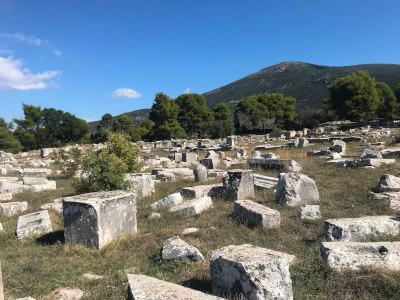
Figure 7: (L) An Ionic capitol with rock stacked on top. (R) A debris field at Epidurus, Greece
As the passage of ZPA over Sicily ended, earth's gravity gradually replaced that asserted by the z-pinches plasma. Levitated material drifted to areas where earth's gravity began to assert itself. In fig.7L rock was stacked up by gravity. It was a very slow process. Where the terrain had no points of gravitational attraction, levitated debris descended randomly, fig.7R. Humans did not scatter these blocks over this field. Images in Sardinia's Domus de Janas always show five z-pinches which probably indicates the maximum number visible at any point in time as they drifted east to west. Accompanying levitated blocks was a cloud of choking dust. Duration of these events depended on the energy input from a Corona Mass Ejection. Besides Sicily Baalbek was another area struct by the z-pinches.
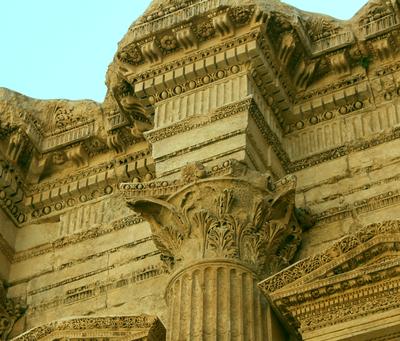
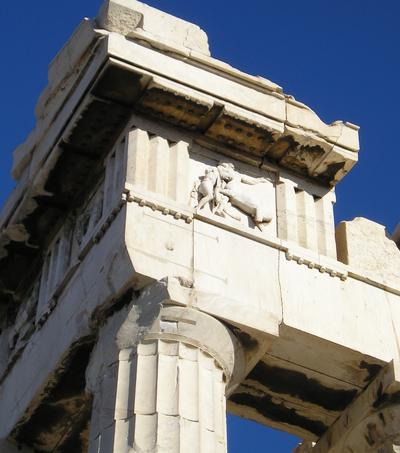
Of the above two images, the first is the AnL Temple of Bacchus4 in Baalbek, fig.8, and second is the Parthenon, fig.9. The former structure is over 10,000 years old. Plasma erosion at the top of the Bacchus pediment puts its construction beyond historic-time-frame. The riot of decoration on the pediment is another indication of AnL construction. The complexity of carving is beyond hammer and chisel capacity. The carving was applied by machine on the ground and later assembled into the pediment. While Antecedent Egyptians (AnE) perfected iconic statues, AnL did so with the art of intricate architectural decoration. Portions of leaves on the capitol are done in the round. This precision could not be duplicated today. Identifying locations where some patterns repeat is impossible. In comparison, architectural decoration on the Parthenon is limited to what could easily be carved with a hammer and chisel. The architrave spanning two columns is composed of three marble slabs sandwiched together. Antecedents would have used a single massive block. The Greeks had no means of lifting a comparable block.
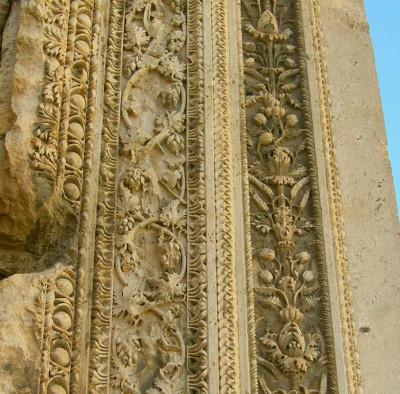
Vines, plants and flowers played a prominent role in AnL architectural designs. Among images carved above, wheat ears and grape leaves can be distinguished. The grape vines are interwoven alternating between top and bottom. This would place these cultivars before the PC time frame. Such elaborate sculpting was not possible by manual means. The bead and reel, egg and dart, vine and leaf, guilloche, torus, etc. were deeply engraved. This exquisite detail is typical of AnL architecture, and only plasma controlled by machine could do it. AnE sculpting was simple compared to this, and it is a mystery how it was accomplished. AnL had some computerized technology that controlled the plasma carving tool because it is too perfect. The sculpting was not done in the historic-time-frame.
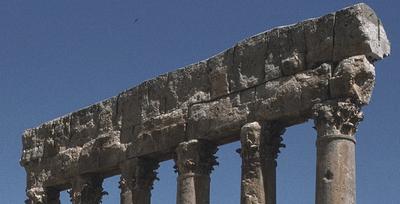
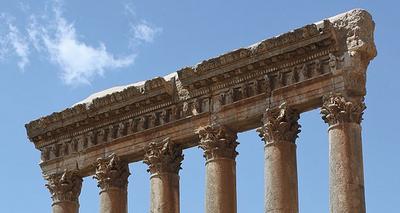
Figure 11: Baalbek, (L) Temple of Jupiter, northside of columns. (R) Southside of columns. Obliterated detail on the northside is not weathering, but plasma erosion. Plasma could move along the solid stone mass of the entablature, but gaps between columns stopped it.
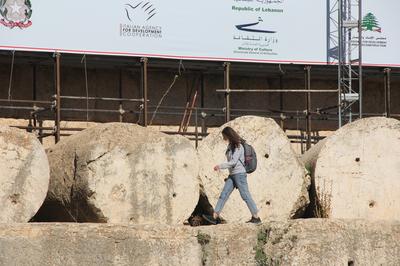
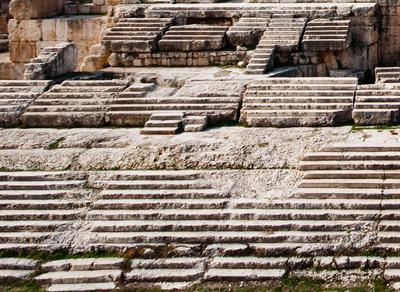
Figure 12: Baalbek, (L) Massive column sections. (R) Stairs are formed from solid blocks of stone.
AnL architects built on a monumental scale. Blocks composing the entablature in fig.11 weight over 60 tons and are raised to height of 62 feet. Stairs in fig.12 were not assembled from separate treads and raisers, but cut into stone blocks and set in place. The famous Trilithon blocks under the Temple of Jupiter are 62 feet in length and weight around 850 tons. Huge columns on the Temple of Bacchus are in three sections of varying length like those in fig.12L. Without the slightest attribution on the building, it is declared to be Roman and dedicated to Bacchus. They could never do any of this. This construction was the work of AnL civilization.
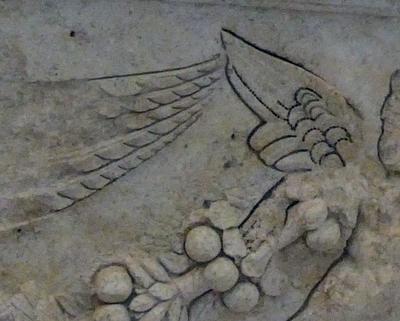
Many locations around the Mediterranean are easily identified as Antecedent by stone block size. Others are identified by the vast amount of quarried stone. Two of these sites are Dionysus Ear and a trench next to Fort Saladin. Chris Dunn, in his study of the Great Pyramid, asserted sound was used to generate energy. Dionysus Ear focuses sound like the GP. Decades ago the writer stood at the center of the Tomb of Clytemnestra at Mycenae and observed the structure focused sound. These were not coincidences, but structures intentionally crafted as machines.
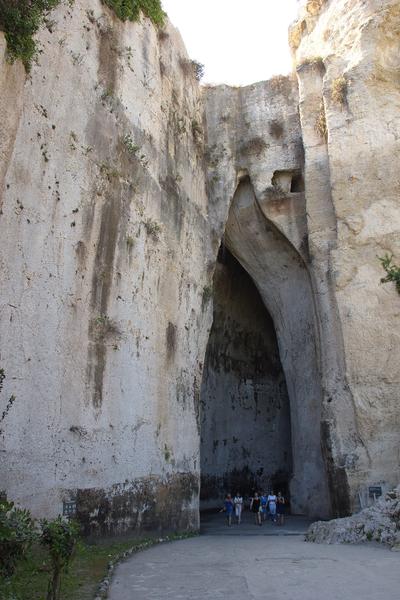
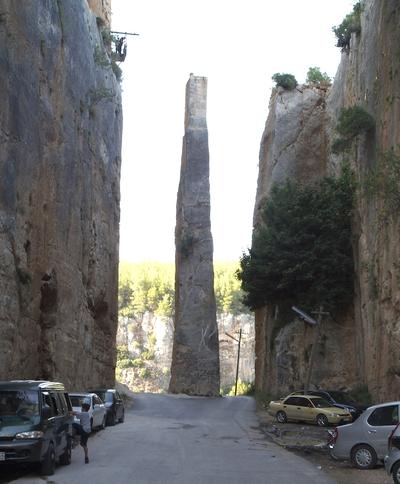
Figure 14: Sicily, (L) Dionyus Ear was quarried to focus sound. (R) A massive defensive trench adjacent to Fort Saladin in Syria. Both are attributed to people who could not have constructed them. The trench is a defensive structure and is evidence the Antecedents had their wars too. The depth implied concern about the trench being filled in.
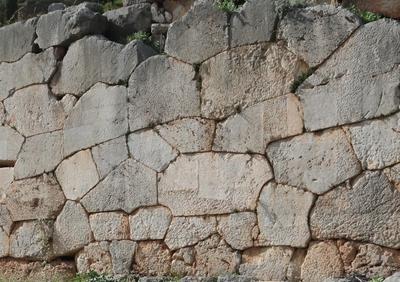
For any attacking force, a moat was a challenge. To get passed it, the strategy was to fill it in. If the opponent can move by levitation very large quantities of fill, then the moat needs to be very deep and broad. Such a solution would explain the trench's dimensions in fig.14R. Image 15, is a retaining wall at Delphi. Building it with polygonal shaped stone had a lower energy requirement than cutting blocks from bedrock. It probably represented an early version of plasma technology. The stones were field stone gathered for this wall. A previous article asserted the AnE used abraders around the Unfinished Obelisk to remove excess stone after it was treated with plasma. This assertion is sustained by the abrasion pattern on the large cream-colored stone in the center. The random but sharply defined pattern of the polish indicated a handheld tool was used. The above three images are examples of Antecedent use of plasma technology.
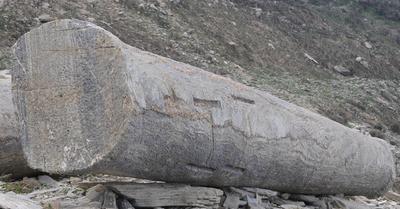
Copais basin in Greece was a lake until the late 19th century when it was drained. The basin covered an area of 250km2. A complex system of dams, dikes and canals were exposed on the drained lake bed. The construction is attributed to various Ancient Greek groups. However, a brief glance at the numbers involved tells who the real engineers were. Quoting Wikipedia, "Excavated remains indicate that up to 400,000,000 m3 of stone and roughly 200,000,000 m3 of earth were moved in order to regulate the Kephissos and Melas river by a complex system of polder dykes..." That is over a billion tons of material moved in area of 250km2! The reader should by now easily identify who the real engineers were.
For humans the Pleistocene Catastrophe could be called the Great Technology Reset. Antecedent civilizations were wrecked and their technology obliterated. Myths ancients used to explain their past have been replicated today as absurd academic narratives. To get these fantasies animated, researchers simply ladle on more slaves, peasants or time then pretend they make rational sense. They are shaman dressed in pinstripes. Antecedent accomplishments have been fobbed off on groups in the historic-time-frame whose technology never rose above stoop-labor. Standing on the neck of science is courting disaster. Z-pinches will be back, and modern metal-drenched cultures are like lambs awaiting slaughter. This is to say nothing about the total abrogation of intellectual responsibility.
-
https://www.classicist.org/articles/a-survey-of-classical-architecture-part-ii-ancient-rome-with-richard-economakis/ 19:00↩︎
-
Water erosion narrative goes back over 200 years to Scottish businessman James Hutton.↩︎
-
Whether these sections in fig.3L are complete columns is unknown to the writer and is not germane to this argument.↩︎
-
Also called Temple of Jupiter.↩︎

